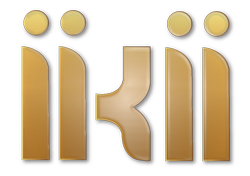Research Article
Online Learning’s Impact on Senior High School Students in Chemistry during COVID-19 Lockdown in Indonesia
More Detail
1 Department of Education and Human Potentials Development, National Dong Hwa University, Hualien 974301, Taiwan;2 Department of Natural Resources and Environmental Studies, National Dong Hwa University, Hualien 974301,Taiwan* Corresponding Author
Educational Innovations and Emerging Technologies, 3(4), 2023, 17-25, https://doi.org/10.35745/eiet2023v03.04.0003
Published: 30 December 2023
OPEN ACCESS 556 Views 267 Downloads
ABSTRACT
We determined how well high school students at a state school in Indonesia achieved academically after receiving chemistry instruction using an online learning method throughout the COVID-19 pandemic. We used the pre-experimental research method with 1 group design. The participants were 34 students, consisting of 12 males and 22 females. A cognitive achievement questionnaire was used for the survey. Parametric tests were used to analyze the data because the Shapiro-Wilk normality test indicated a value of 0.138. Equal variances were found with Levene’s test (0.576). The variance was not different between genders. The cognitive tests after the online learning showed no significant differences between genders (t-test significance > 0.05). The study’s findings supported the validity of online learning for Indonesian students.
CITATION (APA)
Novita, L., & Yang, Y.-C. (2023). Online Learning’s Impact on Senior High School Students in Chemistry during COVID-19 Lockdown in Indonesia. Educational Innovations and Emerging Technologies, 3(4), 17-25. https://doi.org/10.35745/eiet2023v03.04.0003
REFERENCES
- Anwar, B. (2013). 1700 Soal bimbingan pemantapan kimia untuk SMA. Jakarta Timur, Indonesia: Yrama Widya. Bandung.
- Chandio, M. T., Zafar, N., & Solangi, G. M. (2021). Bloom's Taxonomy: Reforming Pedagogy through Assessment. Journal of Education and Educational Development, 8 (1), 109–140.
- Chung, E., Subramaniam, G., & Dass, L. C. (2020). Online learning readiness among university students in Malaysia amidst COVID-19. Asian Journal of University Education, 16 (2) 46–58.
- Gronlund, N. E. (1977). Constructing achievement test second edition. Englewood Cliffs, NJ, USA: Prentice Hall-Inc.
- Herliana, F., Astra, I. M., Supriyati, Y., & Mazlina, H. (2020). The difference in physics learning outcomes based on gender after using blended problem-based learning model. Journal of Physics: Conference Series, 1460(1), 012125.
- Hsiao, Y. C. (2021). Impacts of course type and student gender on distance learning performance: a case study in Taiwan. Education and Information Technologies, 26 (6), 6807–6822.
- Hrastinski, S. (2019). What do we mean by blended Learning? Tech. Trends, 63(5), 564–569.
- Islam, Z. U., & Usmani, A. (2017). Psychometric analysis of anatomy MCQs examination. Pakistan Journal of Medical Sciences, 33(5), 1138–1143. doi: https://doi.org/10.12669/pjms.335.12383
- Johnson, S. (2002). 1001 Soal dan pembahasan. Jakarta Timur, Indonesia: Erlangga. Bandung.
- Kazu, I. Y., & Demirkol, M. M. (2014). Effect of blended learning environment model on high school students’ academic achievement. Turkish Online Journal of Educational Technology TOJET, 13(1), 78–87.
- Kiviniemi. (2014). Effects on a blended learning approach on student outcomes in a graduate-level public health course. BMC Med Education, 14, 47. https://doi.org/10.1186/1472-6920-14-47
- Lowes, S., Lin, P., & Kinghorn, B. R. (2016). Gender differences in online high school courses. Online Learning, 20(4), 100–117.
- Minister of Education and Culture of the Republic of Indonesia. (2020). Regarding the Implementation of Education Policy in the Emergency Period of the Spread of Corona Virus Disease (COVID-19). Post on March 24, 2020. Available Online : https://www.kemdikbud.go.id/main/blog/2020/03/mendikbud-terbitkan-se-tentang-pelaksanaan-pendidikan-dalam-masa-darurat-covid19 (accessed on July 30, 2021)
- Muller, C., & Mildenberger, T. (2021). Facilitating flexible Learning by replacing classroom time with an online learning environment: A systematic review of blended Learning in higher education. Educational Research Review, 34, 1–16.
- Presidential Decree of the Republic of Indonesia. (2020-a). Regarding the Determination of the 2019 Corona Virus (COVID-19) Public Health Emergency. Post on November 11, 2020. Available Online: https://peraturan.bpk.go.id/Details/135058/keppres-no-11-tahun-2020#:~:text=Kepres%20ini%20mengatur%20mengenai%20penetapan,dengan%20ketentuan%20peraturan%20perundang%2Dundangan (accessed on July 30, 2021)
- Presidential Decree of the Republic of Indonesia. (2020-b). Regarding the determination of Regarding the Determination of the Non-Natural Disaster Corona Virus Disease 2019 (COVID-19) as a National Disaster. Post on April 13, 2020. Available Online: https://peraturan.go.id/id/keppres-no-12-tahun-2020 (accessed on July 30, 2021)
- Sari, I. K. (2021). Blended learning sebagai alternative model pembelajaran inovatif di masa post-pandemi di sekolah dasar. Journal of Basicedu, 5(4), 2156–2163.
- Simanjuntak, E., Hia, Y., & Manurung, N. (2020). The differences in students learning motivation based on gender using blended learning models of mathematics learning. Journal of Physics: Conference Series, 1462(1), 012040.
- World Health Organization. (2020). Coronavirus disease (COVID-19) situation report-149. Post on June 17, 2020. Available online https://www.who.int/docs/default-source/coronaviruse/situation-reports/20200617-covid-19-sitrep-149.pdf?sfvrsn=3b3137b0_4 (accessed on July 30, 2021)
- Yusoff, M. S. B. (2019). ABC of content validation and content validity index calculation. Education in Medicine Journal, 11(2), 49–54.

 OPEN ACCESS
OPEN ACCESS

 The articles published in this journal are licensed under the CC-BY Creative Commons Attribution International License.
The articles published in this journal are licensed under the CC-BY Creative Commons Attribution International License.